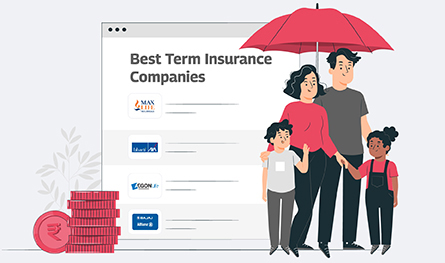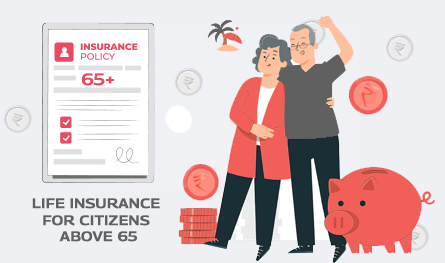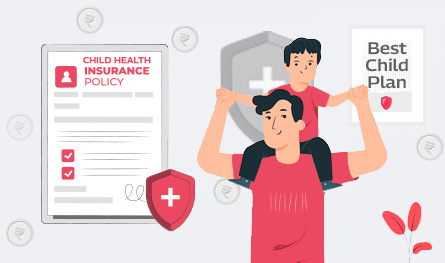What is the Rider Benefit of Life Insurance?
.jpg)
Life insurance is a financial product that provides for the security of your family in case of an accident or other mishap. Standard policies however may not always cover particular risks or situations that may occur in life.
This is where insurance riders come in handy! An insurance rider is an option that lets you add a feature to your basic policy to suit your needs. In this article, we will try to explain what life insurance riders are and why they may be useful for you.
.jpg)
What Are Life Insurance Riders?
An insurance rider is an optional add-on feature that adds extra benefits to a standard life insurance policy. Riders are adaptive to needs that are not covered by the base plan.
Key Features of Life Insurance Riders:
They’re available at an extra premium usually lower than buying a separate policy for the same coverage.
You can customise riders as per your financial goals and life stage requirements.
Riders are usually paid out to riders as lump sums or as policy enhancements when the covered event occurs.
For instance, a critical illness rider can be added to the policy to provide financial support in the event the policyholder is diagnosed with a covered illness, thus lessening the financial burden of medical expenses.
Types of Life Insurance Riders You Should Know
Riders are classified into several types to meet their needs. Here are some of the most common ones:
1. Critical Illness Rider
If the policyholder is diagnosed with critical illness – for instance, cancer, heart attack, or stroke – a lump sum payout is paid. It is used to pay for treatment, recovery or to replace your income.
Key Features:
They cover major critical illnesses (as specified in the policy).
This helps to control large medical bills.
2. Terminal Illness Rider
The role of this rider is to give financial support to the policyholder if the policyholder is diagnosed with a terminal illness and has a very short life expectancy. This assures that the family is financially solid in a rough time.
Key Features:
It pays out a part of the sum assured in advance.
It can be used to pay off medical bills or debts.
3. Accidental Death Rider
If the policyholder dies in an accident, an additional sum assured is paid to the nominee. It improves the base policy from a financial protection point of view.
Key Features:
Covers accidental deaths.
It provides financial security extra for the family.
4. Waiver of Premium Rider
This rider waives off future premiums if the policyholder gets permanently disabled or critically ill and cannot pay premiums. It doesn’t take any financial strain on the insured to be active.
Key Features:
Ensures that the policy remains ongoing.
It reduces the policyholder’s financial burden.
5. Income Benefit Rider
This rider assures the nominee of regular payments in case of the policyholder’s death and supplies the essential income to take care of the household expenses on a regular basis.
Key Features:
It provides periodic payments over some period.
It’s good for families whose income depends on the policyholder.
Benefits of Adding Riders to Your Life Insurance Policy
The riders are meant to make your policy more functional in covering you for anything that may happen. Here are the key benefits of life insurance riders:
1. Customised Coverage
Riders are designed to allow you to tailor your policy to address specific risks – so that your policy covers what you need it to.
2. Cost-Effective
It’s cheaper to add riders to an existing policy than to buy standalone policies for the same benefits.
3. Enhanced Financial Security
Riders like the accidental death rider or critical illness rider provide additional payouts, ensuring your family’s financial stability during unforeseen events.
4. Flexibility
You can select riders according to your life stage, income and future financial goals. This means that your policy will be relevant over time.
5. Comprehensive Protection
Riders fill the holes in standard policies, offering all-around protection against certain risks like illness, accidents or loss of income.
How to Choose the Right Life Insurance Riders for Your Needs
Your financial goals, lifestyle and risk profile will determine which riders you should select. Here are some tips to help you make the best decision:
1. Evaluate Your Needs
Evaluate your current life stage and financial commitments. For instance:
An income benefit rider can help your family stay financially stable if you’re the sole breadwinner.
If you are at risk of critical illnesses, you must consider a critical illness rider.
2. Understand Rider Features
There are specific terms and conditions for each rider. Read the policy document carefully to know what is covered, what is not covered and claim procedures.
3. Compare Premiums
Riders add to the premium cost but the added benefits usually outweigh the additional expense. Compare plans and make sure you’re getting your money’s worth on platforms such as Paybima.
4. Check Claim Settlement History
Choose insurers with a good claim settlement ratio so that your or your beneficiaries' claims processes are not disrupted.
5. Consider Long-Term Benefits
Riders like the waiver of premium rider ensure that your policy remains active even in challenging times, providing long-term protection.
In simple terms, a life insurance rider is an add-on feature to a standard life insurance policy that increases the coverage. Specific needs, such as critical illnesses, accidental death, or waiver of premiums are addressed by riders.
Common riders include:
Critical illness rider
Terminal illness rider
Accidental death rider
Waiver of premium rider
Riders add to the total premium of your policy. However, the cost is lower than if you were to purchase standalone policies for the same benefits.
Yes, riders help you opt to tailor your policy as per your financial goals and risk profile. One or more riders can be added to extend your coverage.

Author Bio
Paybima Team
Paybima is an Indian insurance aggregator on a mission to make insurance simple for people. Paybima is the Digital arm of the already established and trusted Mahindra Insurance Brokers Ltd., a reputed name in the insurance broking industry with 21 years of experience. Paybima promises you the easy-to-access online platform to buy insurance policies, and also extend their unrelented assistance with all your policy related queries and services.
Other Life Insurance Products
Latest Post

Health insurance plans are purchased with the hope of medical protection in times of need. However, sometimes it ends up being a source of surprise and disappointment. This mostly happens when people rush to buy health insurance plans, often overlooking essential aspects. Ignoring waiting period clauses, misunderstanding exclusions, and being unaware of sub-limits can lead to unwanted problems in the future.


Term insurance is an important investment. However, with the availability of so many insurers offering term plans, it becomes difficult to select the best term plan to suit your needs. Buying a term plan needs some consideration and research on the part of the policyholder. In this post, let us discuss the best term insurance providers in India.


If you think of life insurance, chances are you are picturing something people buy in their 30s or 40s. But what if you are 65 or older and just getting started? The good news is that you are never too late. Whether you are thinking of easing the financial burden on your family, covering final expenses, or simply leaving behind a legacy, there are life insurance options tailored just for you.
This article will be a guide to life insurance for senior citizens above 65 years, explaining why it is important, the type of insurance options, and how to get the right policy for you.


As any parent will tell you, kids come with two things: endless energy and absolutely no sense of self-preservation. From scaling chairs and tables like mountaineers to catching germs within a five-mile radius, kids really know how to keep everyone on their toes. Now, it is understandable you are worried. As much as we would love to wrap our small ones in cotton wool and keep them safe forever, real life has other plans.

.png)
It is very important to know the car insurance cost in India so that you can find the affordable policy that you are looking for in this case.




